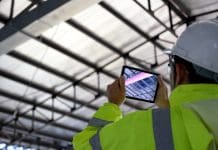BSRIA has launched its White Paper on wearables & wellbeing in buildings – the story so far, which suggests that while there is substantial potential for wearables, there are also significant technical and social challenges raised
As a leading international industry body concerned with building services, BSRIA has taken a keen interest in “new and emerging technologies” and their potential impact on the built environment.
The general consensus emerging from the wearables & wellbeing White Paper was that, while there was substantial potential for the deployment of wearables, there were also significant technical, social and legal challenges raised.
It was also clear that there was little evidence of any practical solutions linking wearables to HVAC or building systems in general that were already in operation, apart from in “niche areas” such as wearable security fobs.
The paper looked at the kinds of wearable technologies currently available and at what needs to happen in order to bring viable solutions to market that link wearables and building systems in a “useful way”.
Henry Lawson, BSRIA’s Senior Market Research Consultant, BSRIA’s World Market Intelligence Division commented: “At present, the practical applications of wearables are strongly focused on health and fitness, from the monitoring of basic health metrics such as exercise taken and heart rates, through to the tracking of specific and sometimes serious medical problems. There is also some overlap between health and ‘leisure’ with goals such as relaxation.
“There is growing evidence to support the common sense view that people who are healthier and happier are likely to be more productive and that this can feed into a positive financial return. There is also evidence that buildings can affect wellbeing positively or negatively both through their design and through the functionality and efficiency of the systems running to heat, cool and ventilate and light the building.”
Lawson added: “There needs to be a means of collecting, calibrating and analysing data from a lot of different wearable devices.
“This immediately raises issues of consent, privacy and data security, as data relating to physical health is likely to be highly sensitive and data relating to mental states even more so. People in buildings, whether employees, customers or visitors, need a motive to share their data.
“Ironically, when it comes to emerging technology of this kind, one thing that the past has taught us is that some of the most important and far reaching applications for wearables, both inside and outside buildings, are likely to be ones that we have not even thought of yet.”
Wearables & wellbeing in buildings – the story so far White Paper published in 2018 is available (as a free copy) in combination with the purchase of additional BSRIA studies.














